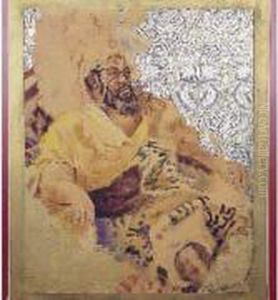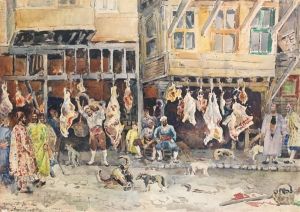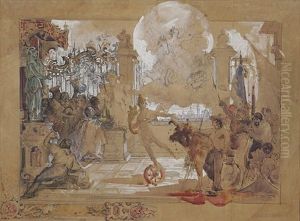Charles Toche Paintings
Charles Toche was a French painter and decorator known for his historical and allegorical works, as well as for his contributions to the Art Nouveau movement. Born in 1851 in Rochefort-sur-Mer, France, Toche developed an interest in art at a young age and pursued his education in the arts at the École des Beaux-Arts in Paris. There, he was a student of Isidore Pils and Henri Lehmann, who were prominent figures in the academic art world of the time.
Toche's career was marked by his versatility and his ability to work on a grand scale. He was particularly adept at fresco painting, which led to commissions for decorating public buildings and participation in international exhibitions. His style combined the academic tradition with a more modern, decorative approach, which aligned him with the Art Nouveau movement that was gaining popularity towards the end of the 19th century.
Throughout his career, Toche received several honors and awards, including medals at the Salon, the annual art exhibition held in Paris. His works were celebrated for their vibrant color and dynamic composition, which often captured historical events or allegorical scenes with a sense of drama and emotion. Despite his success, Toche's work is less well-known today compared to some of his contemporaries, and his contributions to the decorative arts are often overshadowed by the more famous figures of the Art Nouveau movement.
Charles Toche passed away in 1916, leaving behind a legacy of work that remains appreciated by art historians and collectors who specialize in late 19th- and early 20th-century French art. His paintings and decorative works can be found in various museums and private collections across France and beyond.


